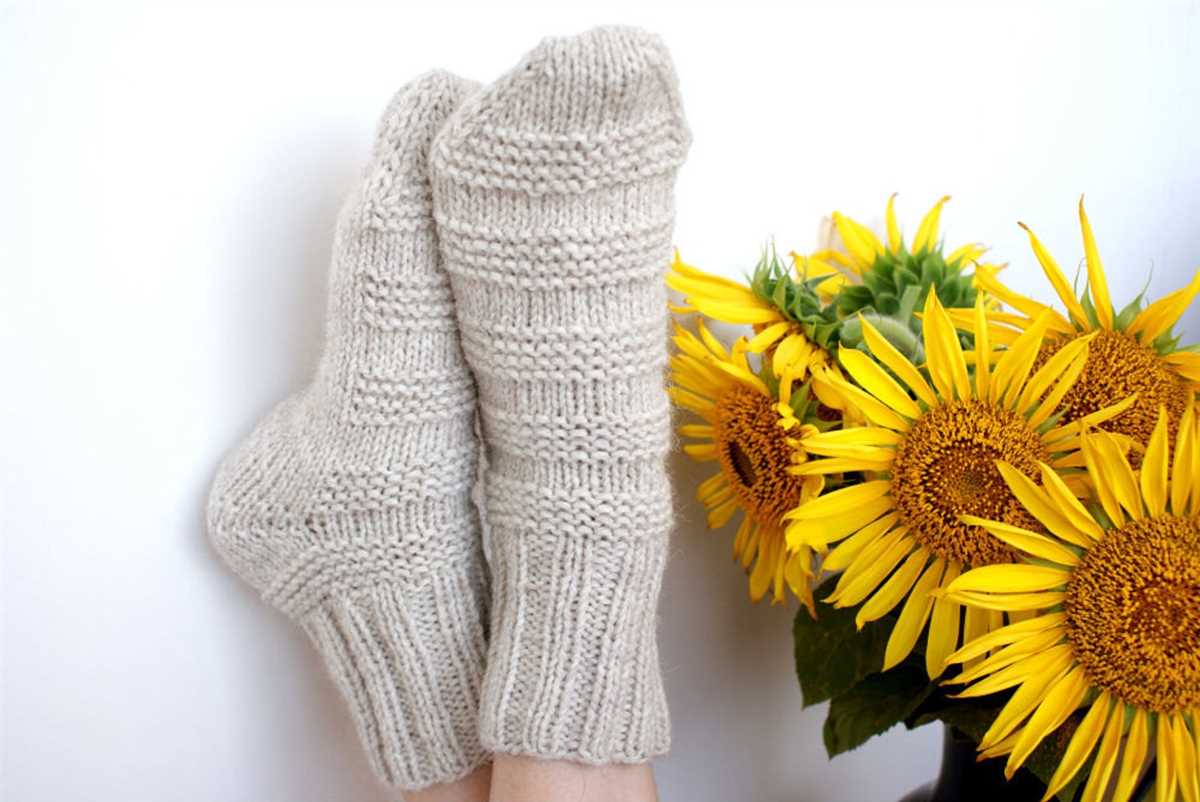
If you’re looking for a knitting project that is both practical and stylish, look no further than men’s thick socks. These socks are not only warm and cozy, but they also make a great gift for the men in your life. Whether you’re a seasoned knitter or just starting out, this pattern is perfect for you.
Men’s thick socks are perfect for those cold winter days when you need an extra layer of warmth. Made with a thick yarn and a larger needle size, these socks are not only comfortable, but also durable. The pattern uses basic knitting stitches such as knit and purl, making it an ideal project for beginners.
With this knitting pattern, you can customize the socks to fit any size foot. Whether you’re knitting a pair for yourself or for a loved one, you can easily adjust the length and width of the socks to ensure a perfect fit. Plus, the pattern allows for endless possibilities when it comes to colors and designs, so you can create a unique and personalized pair of socks every time.
Men’s Thick Socks Knitting Pattern
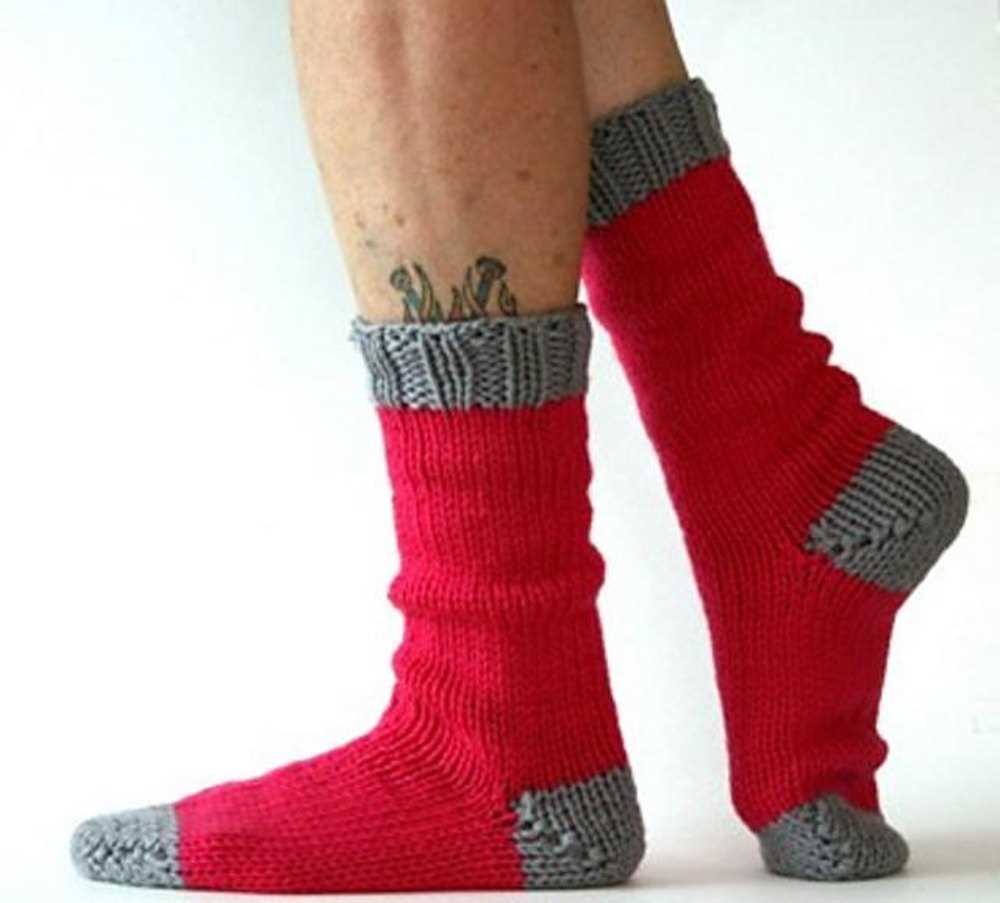
Knitting a pair of thick socks for men is a great way to keep their feet warm and cozy during cold winter months. Whether you are an experienced knitter or a beginner looking for a new project, this pattern will guide you through the steps to make a comfortable and durable pair of socks.
To start, you will need a set of double-pointed knitting needles in the appropriate size for the wool you have chosen. Thick yarn is recommended for men’s socks, as it provides extra warmth and insulation. You will also need a tapestry needle for sewing in the loose ends.
The first step is to cast on the desired number of stitches, typically around 60-80 stitches for men’s socks, depending on their foot size. It’s important to use a stretchy cast-on method to ensure a snug fit. The long-tail cast-on or German twisted cast-on are good options.
Once you have cast on, you will start knitting the ribbed cuff of the sock. This can be done in a simple knit 2, purl 2 ribbing pattern, or you can choose a different ribbing pattern if desired. Knit the cuff for about 1-2 inches, or until you reach the desired length.
After the cuff is complete, you will knit the leg of the sock in the desired stitch pattern. Stockinette stitch, which is knitting every stitch on the right side and purling every stitch on the wrong side, is a popular choice for men’s socks. However, you can choose any stitch pattern that you prefer.
Once the leg is complete, it’s time to knit the heel flap. This is typically done in a simple knit and purl pattern, using half of the total number of stitches. The heel flap provides extra padding and support where it’s needed most.
Why Choose Men’s Thick Socks?
Men’s thick socks are the ideal choice for those looking for extra warmth and comfort during the colder months. These socks are designed to provide insulation and protection against the cold weather, making them perfect for outdoor activities or simply lounging around the house on a chilly day.
One of the main advantages of men’s thick socks is their ability to keep your feet warm. The thick material used in these socks helps to trap heat and prevent it from escaping, ensuring that your feet stay cozy and comfortable, even in freezing temperatures. This is particularly important for individuals who spend a lot of time outdoors or participate in winter sports, as cold feet can be very uncomfortable and even lead to frostbite.
Men’s thick socks also offer excellent cushioning and support for your feet. The extra padding in these socks helps to absorb shock and reduce pressure on the soles of your feet, making them more comfortable to wear for long periods of time. This can be especially beneficial for individuals who have to stand or walk for extended periods, such as those who work in occupations that require them to be on their feet for hours at a time.
Additionally, men’s thick socks are often made from high-quality materials that are durable and long-lasting. This means that they can withstand frequent use and regular washing without losing their shape or becoming worn out. Investing in a few pairs of thick socks can save you money in the long run, as you won’t have to constantly replace them due to wear and tear.
In conclusion, men’s thick socks are a practical and essential item for anyone wanting to keep their feet warm and comfortable during the colder months. With their insulation, cushioning, and durability, these socks offer unbeatable warmth and support, making them a wise choice for both outdoor enthusiasts and those who simply want to stay cozy at home.
Materials Needed for Knitting Men’s Thick Socks
When it comes to knitting men’s thick socks, having the right materials is essential. Not only will the right materials ensure a comfortable fit, but they will also ensure durability and warmth. Here is a list of the materials you will need to create the perfect pair of men’s thick socks.
Yarn:
To make men’s thick socks, you will need a bulky weight yarn. This type of yarn is thicker and provides more insulation, making it perfect for keeping feet warm during colder months. Look for a yarn that is made from natural fibers, such as wool or alpaca, as they are known for their warmth.
Knitting Needles:
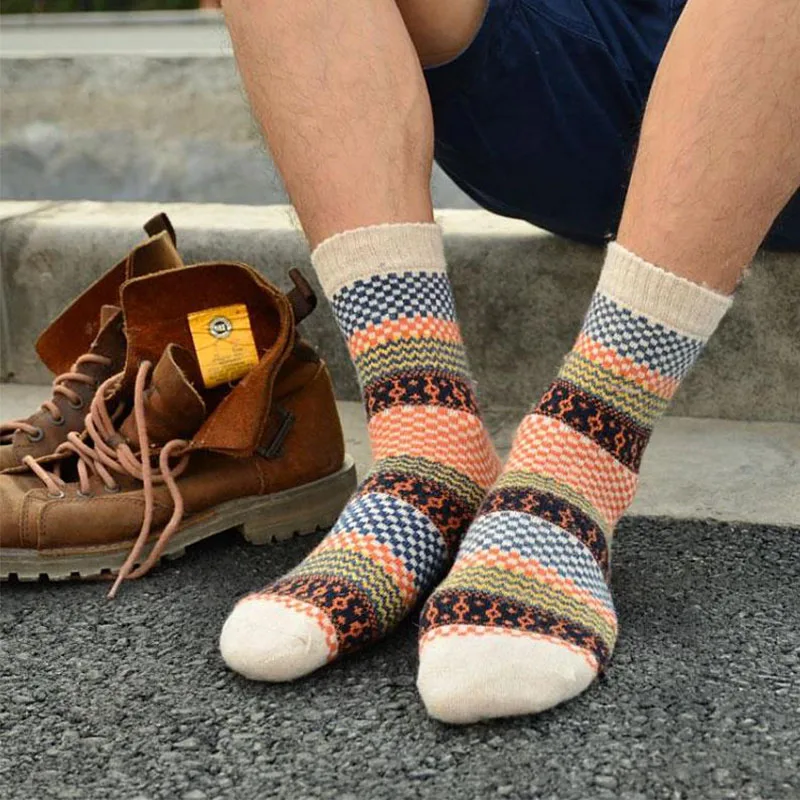
For men’s thick socks, you will need a set of double-pointed knitting needles. These needles allow you to knit in the round and create a seamless sock. Make sure to choose needles that match the size recommended on the yarn label, as this will ensure the correct gauge and fit.
Stitch Markers:
Stitch markers are essential for keeping track of your stitches and pattern repeats while knitting men’s thick socks. They can be helpful in marking the beginning of a round or indicating where specific stitches or increases should be made. Choose stitch markers that are small and lightweight, as they will not interfere with your knitting.
Tapestry Needle:
A tapestry needle is used for weaving in loose ends and finishing off your men’s thick socks. Look for a needle with a blunt tip and a large eye for easy threading. This will ensure that you can neatly secure any loose ends and create a polished final product.
Scissors:
Having a pair of sharp scissors on hand is essential for cutting your yarn and trimming any excess. Make sure to choose small, sharp scissors that are easy to handle. This will make it easier to cut through thick yarn and ensure precise cuts.
With these materials in hand, you will be well-equipped to knit a pair of cozy and durable men’s thick socks. Remember to follow the knitting pattern carefully and take your time to create a pair of socks that will keep your feet warm and comfortable in any weather!
Choosing the Right Yarn for Men’s Thick Socks
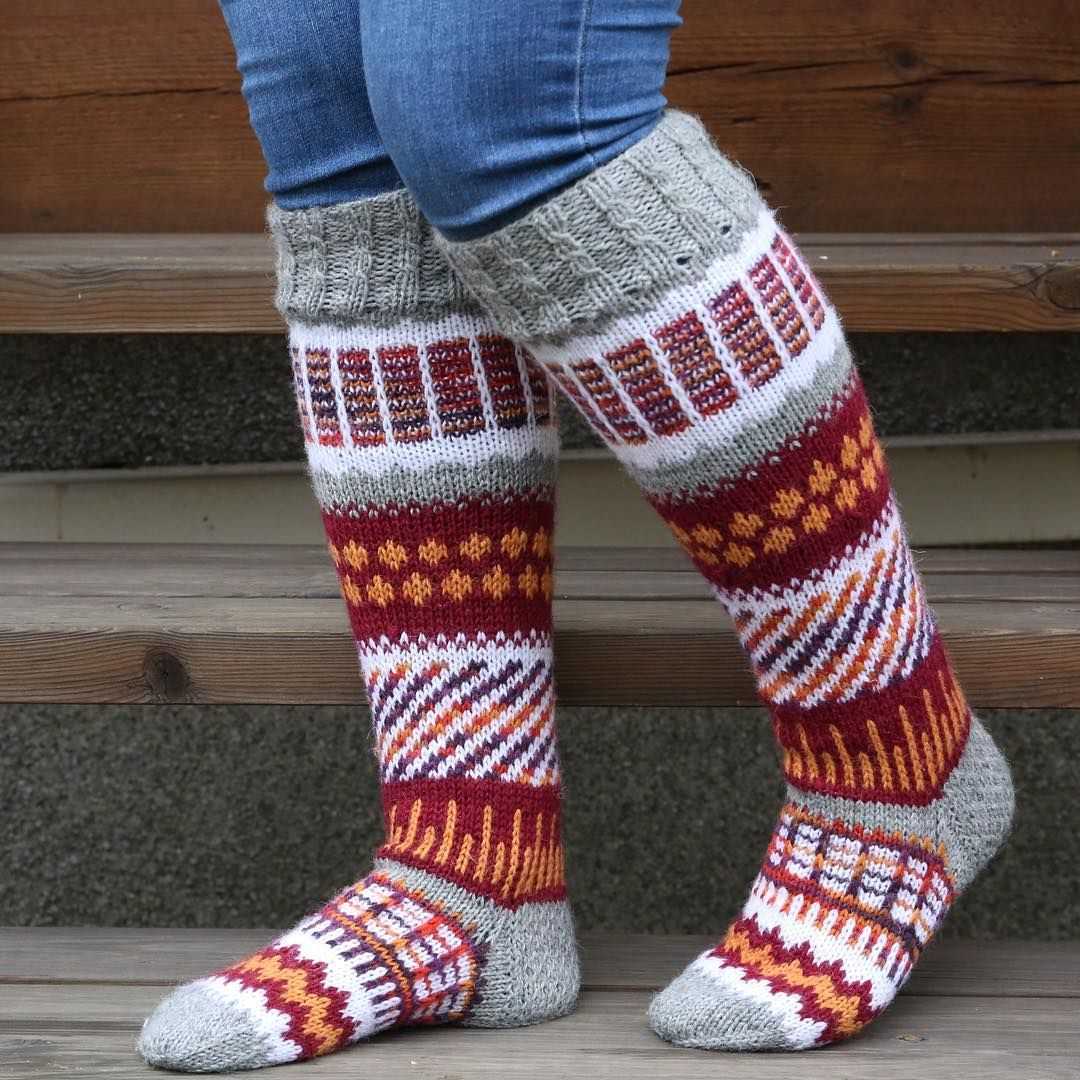
When it comes to knitting men’s thick socks, choosing the right yarn is crucial to ensure both comfort and durability. Thick socks are meant to provide warmth and protection for the feet, so the yarn needs to be strong and insulating. Here are a few factors to consider when selecting the perfect yarn for men’s thick socks.
Fiber Content
The first thing to consider is the fiber content of the yarn. Natural fibers like wool or alpaca are excellent choices for thick socks as they provide excellent insulation and moisture-wicking properties. Wool, in particular, is known for its warmth and elasticity, making it ideal for socks that need to keep the feet dry and cozy.
Another option is to choose a yarn blend that combines natural fiber with synthetic materials like nylon or acrylic. These synthetic fibers add durability and strength to the sock, making it resistant to wear and tear. They also enhance the moisture-wicking capabilities of the sock, ensuring that the feet stay dry even during extended wear.
Weight and Thickness
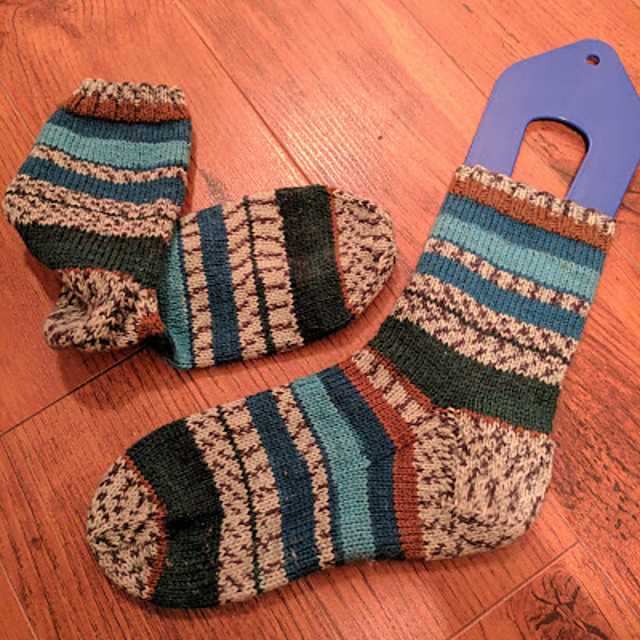
Men’s thick socks require a yarn that is bulky and thick to provide the necessary warmth and cushioning. When selecting the yarn, look for a weight category that falls under the bulky or super bulky range. These weights will ensure that the socks have the desired thickness and provide ample protection against cold temperatures.
Keep in mind that the thickness of the yarn will also affect the gauge and the size of the finished socks. Make sure to check the recommended gauge for the pattern you’re using and adjust your needle size accordingly to achieve the desired fit.
Color and Design
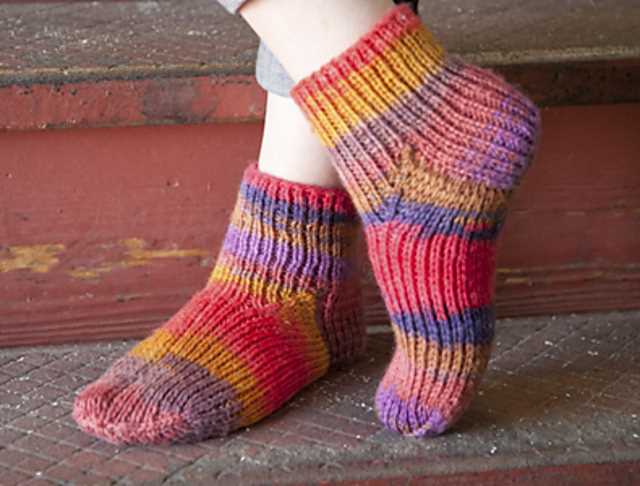
While not directly related to performance, the color and design of the yarn can play a role in the overall aesthetics of the socks. Men’s thick socks are often worn with boots or under trousers, so choosing a yarn color that matches their style and preferences is essential. Consider neutral tones like gray, brown, or black for a classic look, or choose bold colors or patterns for a more adventurous style.
By considering the fiber content, weight, and color of the yarn, you can choose the perfect yarn for knitting men’s thick socks. Whether you opt for natural fibers or a blend, make sure to select a yarn that will provide warmth, durability, and style to keep your feet comfortable in all conditions.
Getting Started with Knitting Men’s Thick Socks
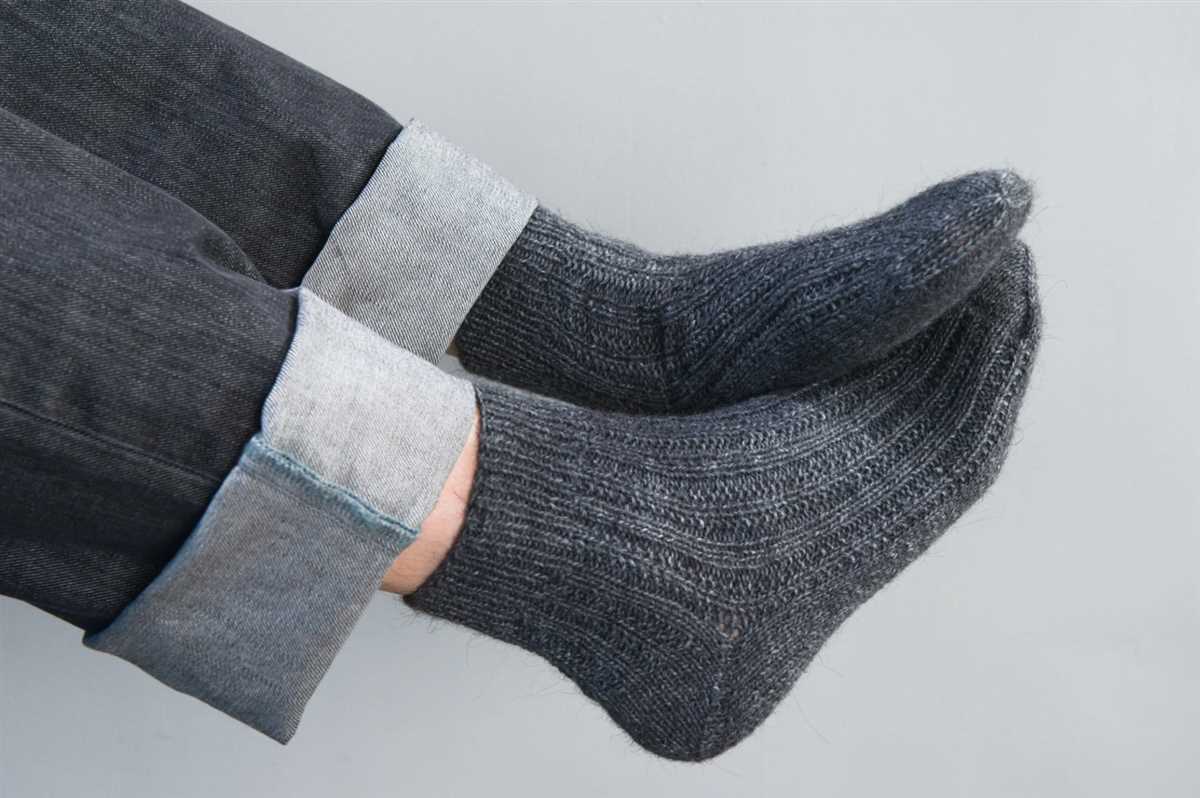
Knitting men’s thick socks can be a rewarding and practical project for any knitter. Whether you’re making them for yourself or as a gift, these socks are sure to provide warmth and comfort during the colder months. To help you get started, here are some tips and steps to follow.
Materials: Before you begin, gather all the necessary materials. This includes a pair of size 6 double-pointed knitting needles, a set of stitch markers, a tapestry needle, and thick yarn in the desired color. The thickness of the yarn will determine the warmth and durability of the finished socks.
Pattern: Find a knitting pattern specifically designed for men’s thick socks. There are many patterns available online, both free and for purchase. Look for a pattern that includes the desired size and level of difficulty. Make sure to read through the pattern and familiarize yourself with the different stitches and techniques involved.
Casting on: Once you have your materials and pattern ready, it’s time to cast on. Start by making a slipknot on one of the double-pointed needles. Then, using the long-tail cast-on method, cast on the required number of stitches specified in the pattern. This will form the cuff of the sock.
Knitting in the round: Men’s thick socks are typically knit in the round to create a seamless tube. To do this, distribute the cast-on stitches evenly across three or four double-pointed needles. Join the round by knitting the first stitch of the cast-on row with the last stitch. Place a stitch marker to mark the beginning of the round.
Knitting the sock: Follow the pattern instructions to knit the body of the sock. This will involve a combination of knit and purl stitches, as well as shaping techniques like decreases and increases. Pay attention to the pattern’s instructions for the heel, gusset, and toe sections, as these areas require specific techniques to ensure a good fit.
Finishing: Once you have completed knitting the sock, it’s time to finish it off. Cut the yarn, leaving a long tail. Thread the tail through a tapestry needle and use it to close the toe of the sock. Weave in any loose ends to secure them. Give the sock a gentle blocking by washing it and allowing it to air dry. This will help to shape the sock and give it a polished finish.
Enjoying the final product: Once the socks are dry, try them on and enjoy the warmth and comfort they provide. Men’s thick socks are not only practical but can also be stylish. Experiment with different colors and patterns to create unique socks that reflect your personal style.
Casting On Stitches for Men’s Thick Socks
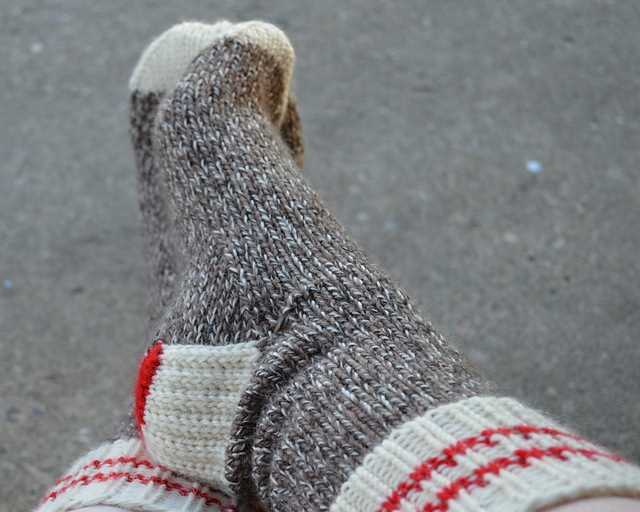
When knitting men’s thick socks, it is important to start with a strong and durable cast on. A solid, secure cast on will ensure that the socks hold their shape and withstand the wear and tear of daily use. There are several cast on methods that work well for thick socks, including the long tail cast on, the knit cast on, and the cable cast on.
The long tail cast on is a popular choice for socks because it creates a stretchy and flexible edge. To use this method, start by estimating the amount of yarn you will need by measuring the tail against the length of the sock cuff. Make a slipknot at the end of the tail, and then hold the needle in your right hand with the slipknot on the left needle. Using your thumb and index finger, create a V shape in the working yarn and insert the right needle into the loop. Wrap the yarn around the right needle from back to front, and then pull the new loop through the old loop. Repeat this process until you have cast on the desired number of stitches.
The knit cast on is another good option for thick socks as it creates a sturdy and firm edge. To use this method, make a slipknot and insert the right needle into it. Wrap the yarn around the right needle as if to knit, and then pull the new loop through the old loop. Place the newly formed stitch onto the left needle, and repeat the process until you have cast on the required number of stitches.
The cable cast on is a slightly more advanced method that results in a neat and tidy edge. To use this method, make a slipknot and place it on the left needle. Insert the right needle into the slipknot from front to back, and then wrap the yarn around the right needle as if to knit. Pull the new loop through the old loop, but instead of placing it on the left needle, bring it between the two needles. This creates a new stitch that is cast on. Repeat this process until you have cast on the desired number of stitches.
Whichever cast on method you choose, make sure to cast on the correct number of stitches specified in the pattern. This will ensure that your men’s thick socks fit properly and are comfortable to wear. Take your time and practice the cast on method before starting your socks to ensure that you are confident and comfortable with the technique.
Knitting the Leg of Men’s Thick Socks
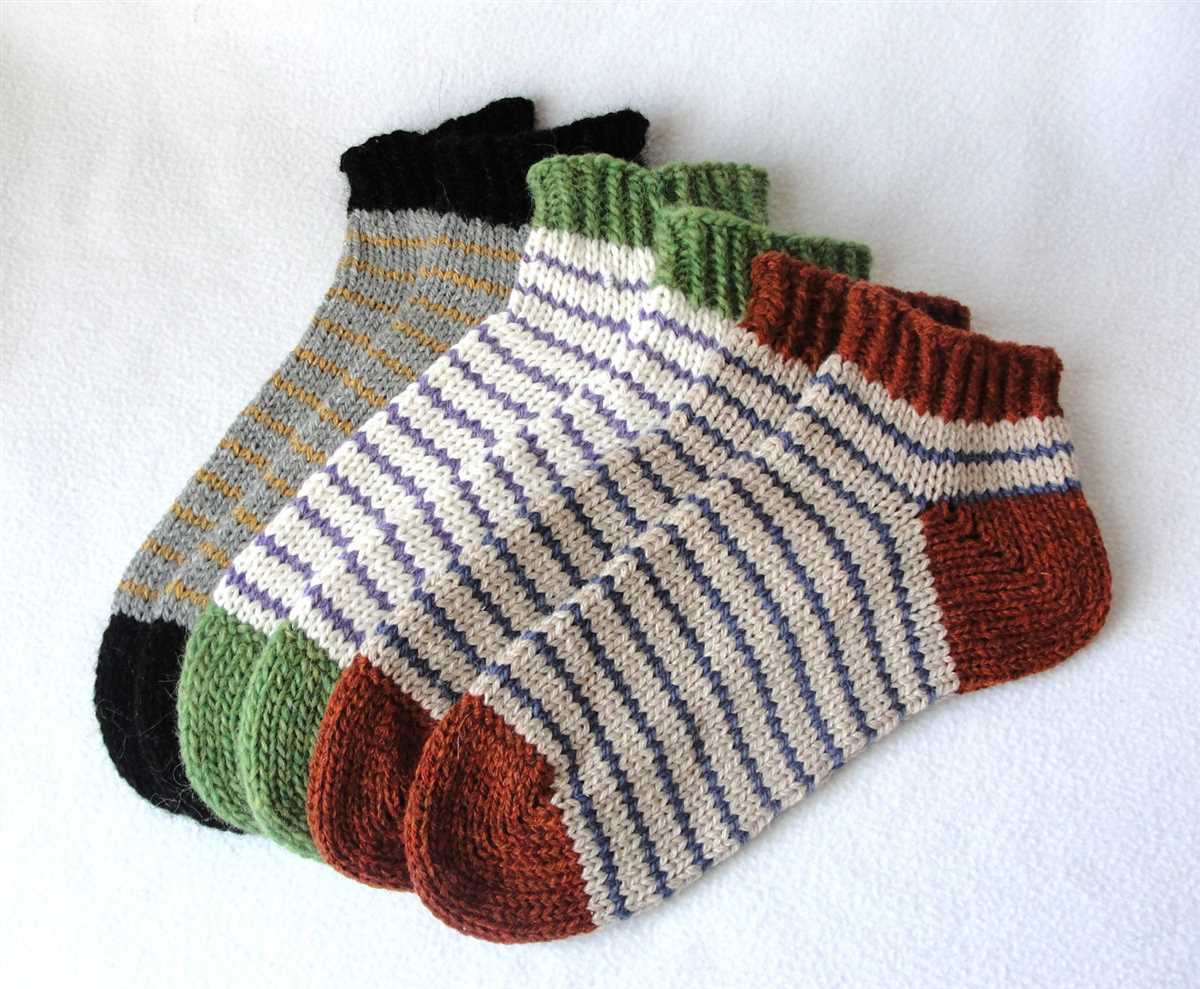
When knitting the leg of men’s thick socks, it’s important to choose a knitting pattern that will provide warmth and durability. Thick socks are typically knitted using thicker yarn and larger needles to create a dense fabric that can withstand wear and tear.
One popular knitting pattern for men’s thick socks is the ribbed pattern. This pattern creates a stretchy and snug fit that helps keep the socks in place and provides extra insulation. To knit the leg of the socks using the ribbed pattern, you will need to alternate between knit and purl stitches. This creates vertical columns of knit stitches separated by purl stitches, giving the socks a textured and elastic quality.
To start knitting the leg of the socks, you will typically begin with a ribbed cuff. The cuff is usually knitted using a smaller needle size to create a tighter stitch. This helps to keep the socks in place and prevents them from slipping down. After knitting the cuff, you will switch to larger needles and continue knitting in the ribbed pattern for the desired length of the leg.
It’s important to measure the recipient’s foot and leg to ensure a proper fit. The leg length can vary depending on personal preference, but a typical length is around 5-6 inches from the cuff to the base of the heel. Pay attention to the desired stretchiness of the socks as well, as this will determine how many stitches to cast on and how many rows to knit before starting the heel.
Overall, knitting the leg of men’s thick socks requires attention to detail and a bit of patience. However, the end result is a warm and comfortable pair of socks that will keep the wearer’s feet cozy during colder months.
Creating a Gusset and Heel Flap for Men’s Thick Socks
When knitting men’s thick socks, it’s important to create a gusset and heel flap to ensure a comfortable and well-fitting sock. The gusset is the triangular-shaped piece of fabric that is added to the sides of the sock to accommodate the natural shape of the foot. It provides extra room for the heel while allowing the sock to hug the foot snugly. The heel flap, on the other hand, is a rectangular piece of fabric that covers the back of the heel and provides reinforcement and durability to this high-wear area of the sock.
To create the gusset, you will first divide the stitches of the sock evenly onto three needles, with one needle holding the top of the foot, and the other two holding equal portions of the stitches from the sides. Then, you will start working decreases on each side of the heel stitches to create the triangular gusset shape. This is usually done by decreasing one stitch at each side on every other row until the desired number of stitches is reached for the foot circumference.
The heel flap is worked on the back needle stitches. It is typically worked in a reinforced stitch pattern, such as slip stitch or eye of partridge, to add extra durability to the sock. To create the heel flap, you will work back and forth in rows, usually for about half of the total sock stitches, using the desired stitch pattern. This creates a dense and reinforced fabric that can withstand the constant rubbing and pressure that the heel endures while wearing the sock.
Once the gusset and heel flap are completed, the sock can then be shaped to the desired toe, such as a rounded or wedge-shaped toe. The gusset adds extra room for the foot while the heel flap provides reinforcement and durability, making the sock comfortable and long-lasting. Following a pattern or instructions specific to men’s thick socks will help guide you through the process and ensure a successful and well-fitting finished product.
Shaping the Toe of Men’s Thick Socks
When knitting men’s thick socks, shaping the toe is an essential step to ensure a comfortable and well-fitting end result. The toe area is where the foot curves and narrows, so it requires careful attention to achieve the desired fit.
To shape the toe, you will typically start by decreasing stitches gradually to create a tapered effect. This is done by working decreases at specific intervals along the sock’s toe section. The exact number of stitches to decrease and the intervals will depend on the specific knitting pattern you are following.
There are several common methods for shaping the toe:
- Standard Decreases: This method involves working regular decreases (such as knit two together or purl two together) on each side of the toe section at set intervals. This creates a gentle slope towards the tip of the toe.
- Round Toe: With this method, you decrease stitches evenly all around the toe section during each round. This creates a rounded shape at the end of the sock.
- Star Toe: The star toe method involves decreasing stitches in a star-like pattern, where the decreases radiate out from the center of the toe section. This creates a unique and decorative look.
It’s important to follow the instructions of your chosen knitting pattern when shaping the toe of men’s thick socks. Pay attention to the recommended number of decrease rounds and the specific decrease method to achieve the desired fit and style. Additionally, always try the sock on during the knitting process to ensure it fits comfortably and adjust the shaping if needed.
Finishing Off Men’s Thick Socks
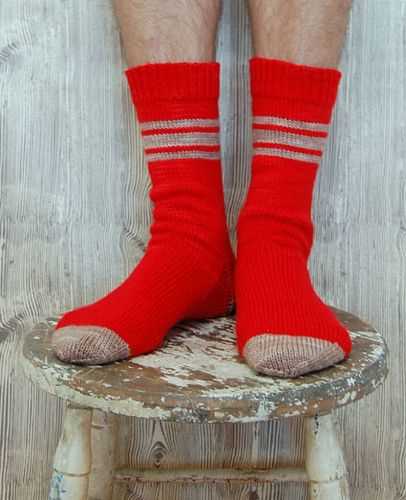
Once you have finished knitting your men’s thick socks, there are a few steps you need to take to complete the project. These steps include weaving in ends, blocking, and seaming if necessary. Follow these instructions to ensure your socks are finished off neatly and professionally.
Weaving in Ends
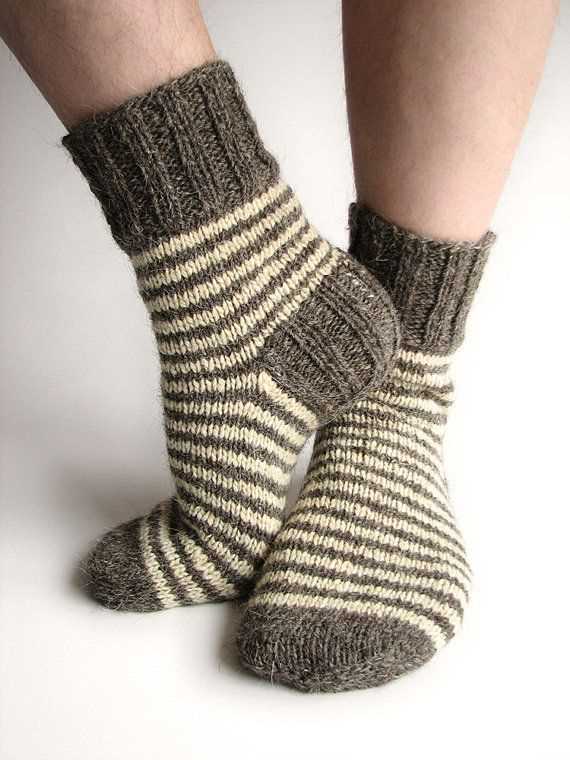
Start by weaving in any loose ends from your knitting. Use a tapestry needle to thread each end through several stitches on the wrong side of the sock, making sure to catch the yarn securely. Trim any excess yarn using scissors, being careful not to cut through your stitches.
Blocking
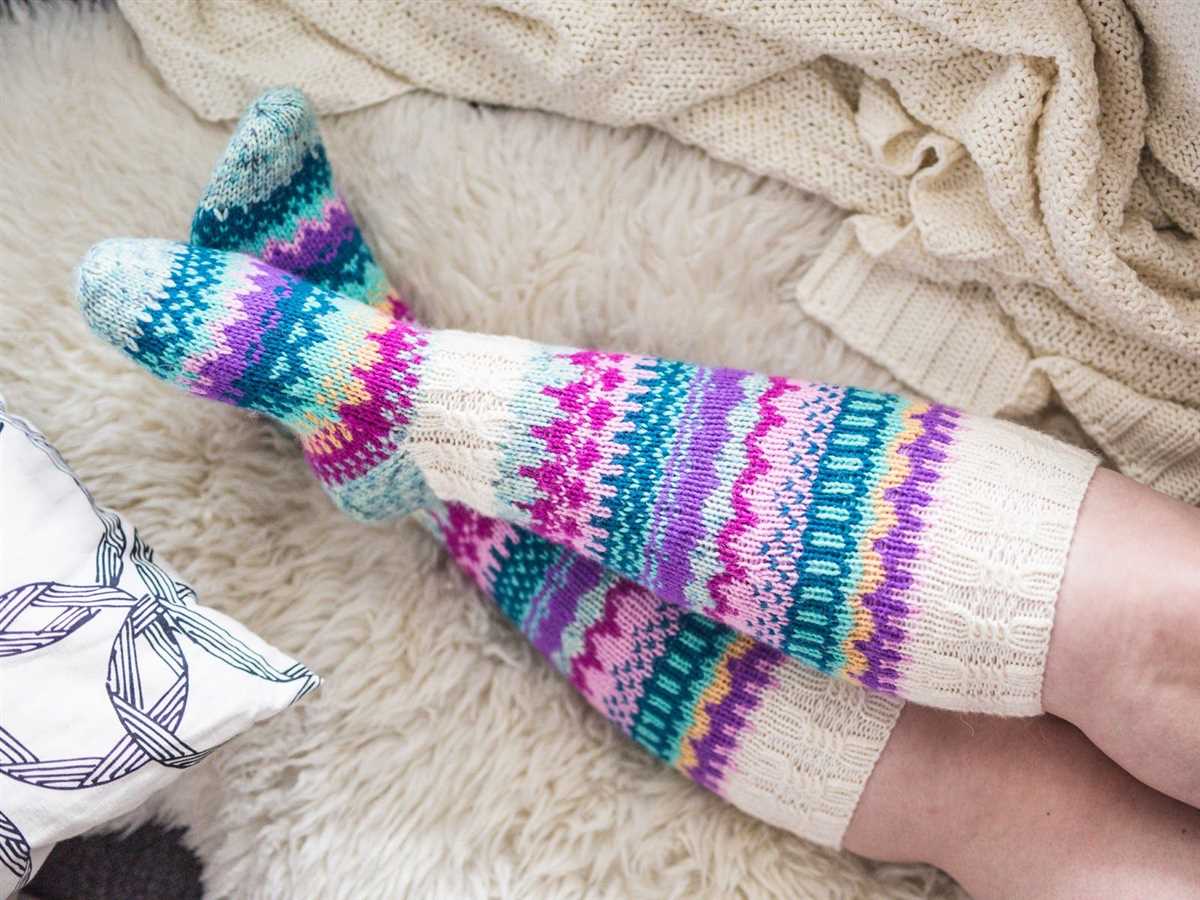
Blocking is an important step for achieving a professional finish. Fill a basin or sink with lukewarm water and add a small amount of wool wash. Place your socks in the water and gently squeeze to wet them thoroughly. Remove the socks from the water and gently squeeze out excess water. Lay the socks flat on a clean towel and shape them to the desired size and shape. Allow the socks to dry completely before wearing or storing.
Seaming, if necessary
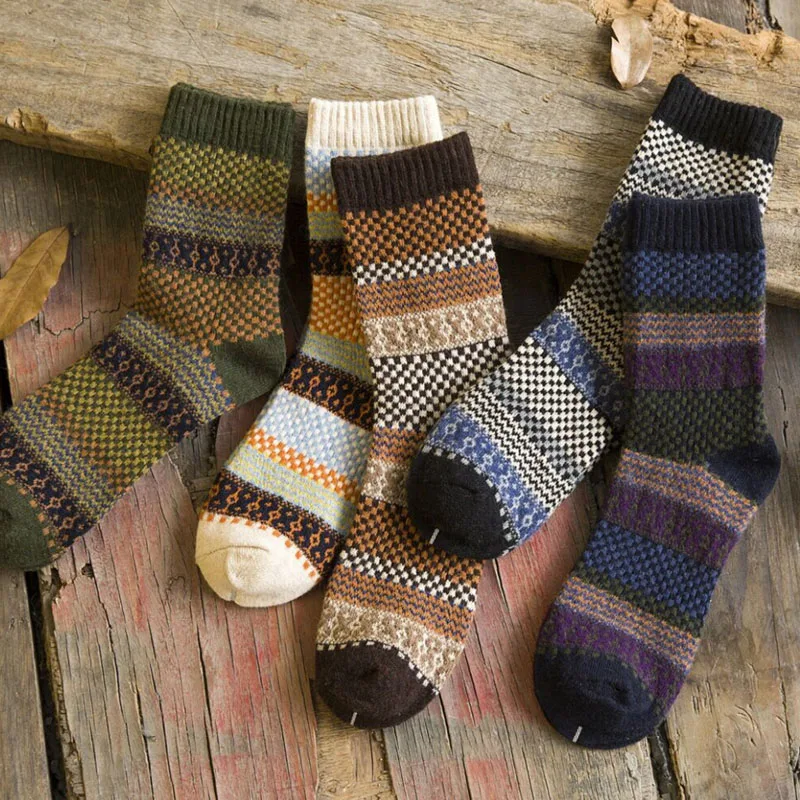
If your socks were knit in separate pieces, you will need to seam them together. Lay the sock pieces flat with the wrong sides facing out. Use a tapestry needle and matching yarn to sew the seams together using a mattress stitch or any other suitable seaming technique. Once the seams are sewn, turn the socks right side out and check for any visible gaps or loose stitches. If necessary, reinforce any weak areas and trim any excess yarn.
By following these steps to finish off your men’s thick socks, you can ensure that they are neat, comfortable, and ready for wear. Take the time to complete these finishing touches, and your socks will be a cozy addition to your wardrobe or a thoughtful handmade gift for someone special.
Tips for Caring for Men’s Thick Socks
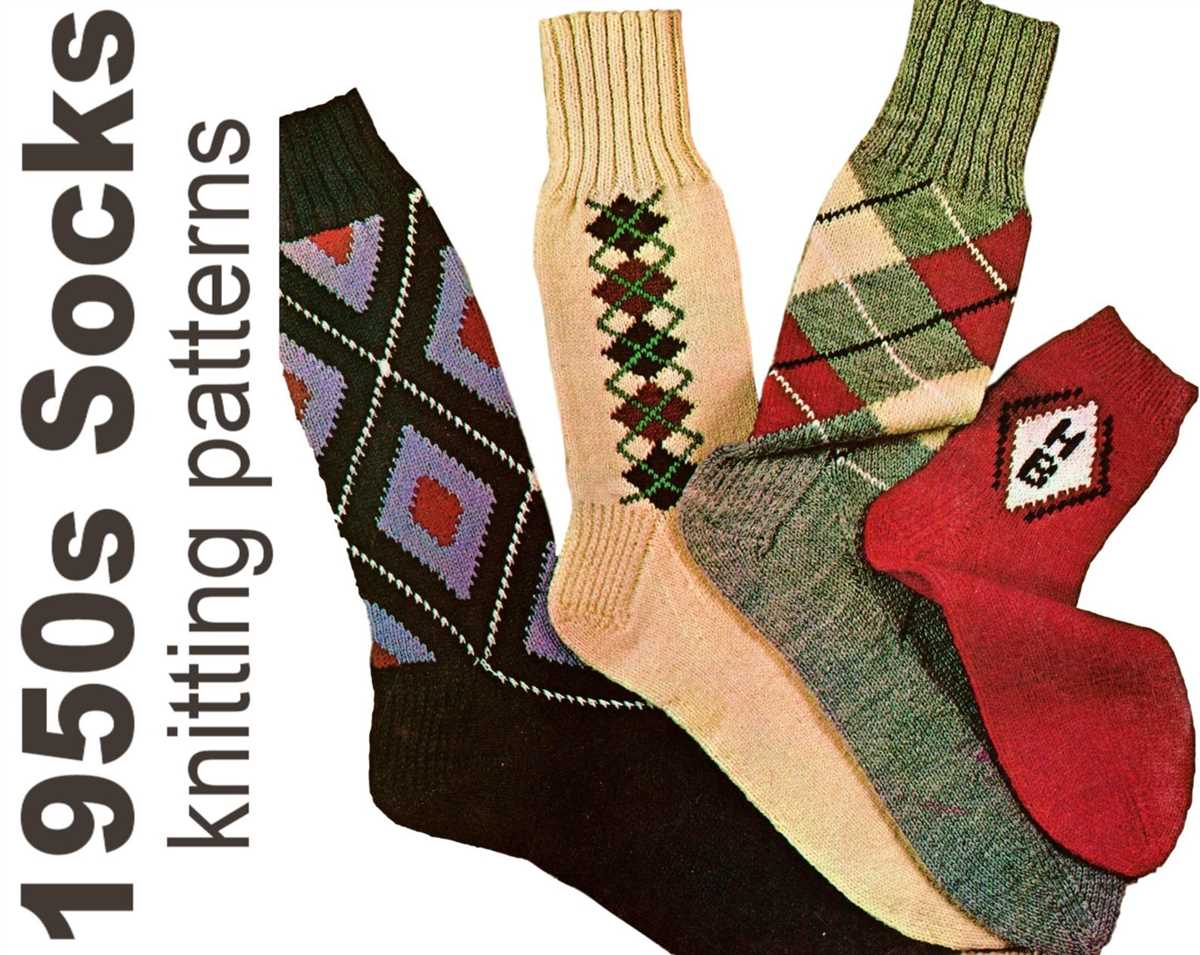
After spending time knitting a pair of thick socks for men, it’s important to know how to properly care for them to ensure their longevity and maintain their quality. Here are some useful tips for caring for men’s thick socks:
1. Machine wash with care:
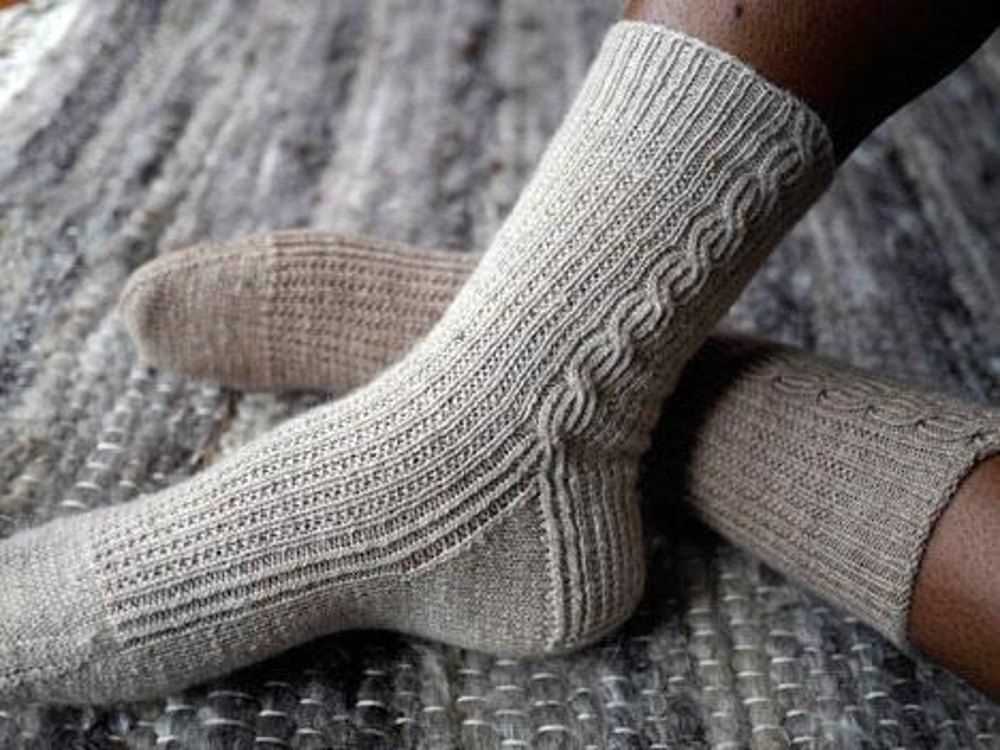
While machine washing is convenient, it can be harsh on thick socks. To prevent damage, turn the socks inside out and place them in a mesh laundry bag before putting them in the washing machine. Use a gentle or delicate cycle with cold water. Avoid using bleach or fabric softener, as they can weaken the fibers.
2. Hand wash for extra care:
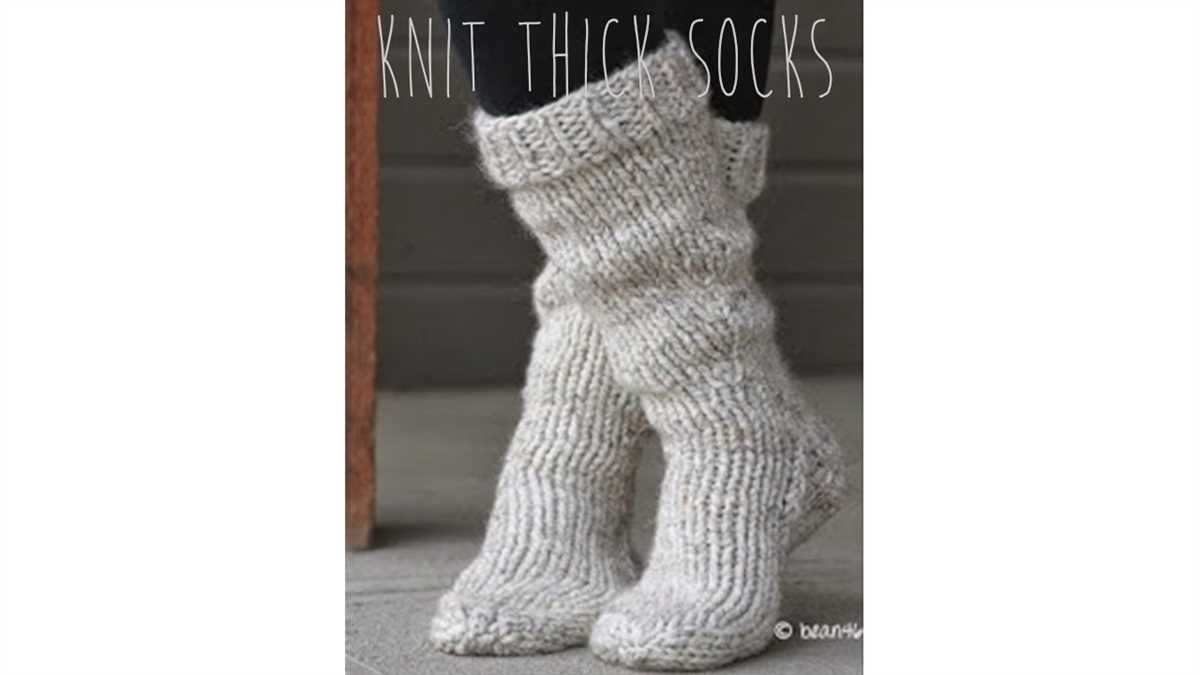
If you want to be extra cautious, hand washing is the best method for cleaning thick socks. Fill a sink or basin with lukewarm water and add a mild detergent. Gently agitate the socks in the water, paying attention to any soiled areas. Rinse them thoroughly with cool water to remove any lingering soap.
3. Dry flat:
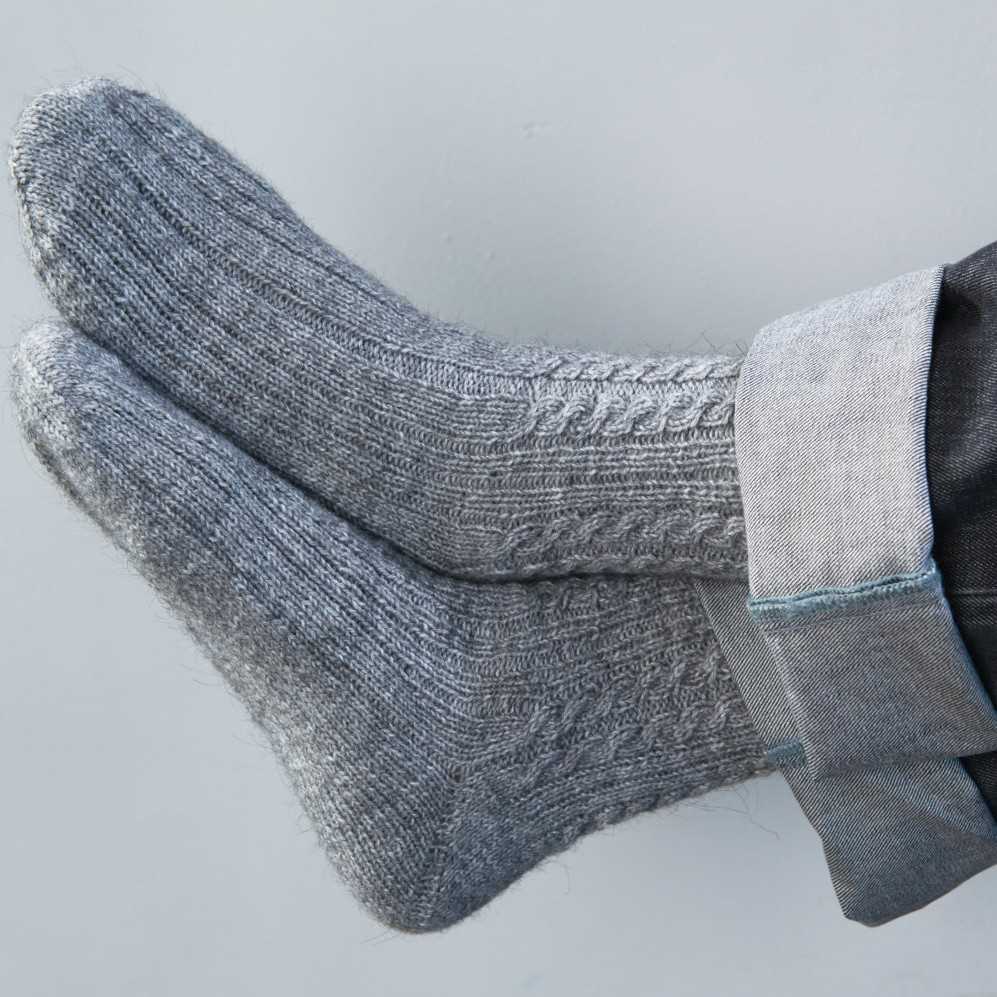
After washing, avoid wringing or twisting the socks, as this can distort their shape. Instead, gently squeeze out excess water and lay the socks flat on a clean towel. Reshape them if necessary and allow them to air dry away from direct heat or sunlight.
4. Store properly:
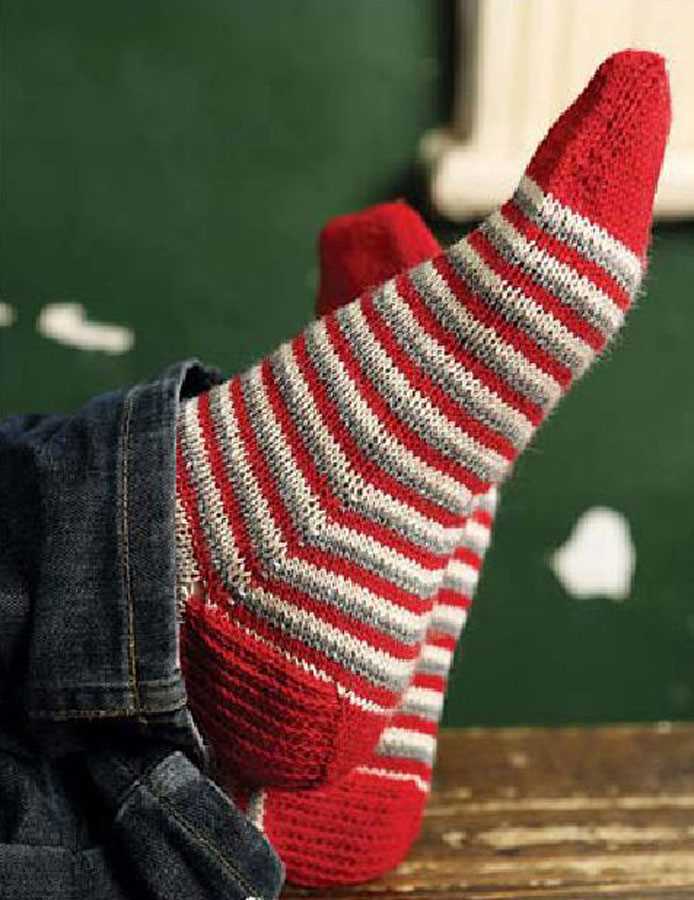
To prevent damage and keep your men’s thick socks in good condition, store them properly. Fold them neatly and place them in a drawer or storage box. Avoid hanging them, as this can stretch them out over time. Keep them away from moths by using cedar balls or lavender sachets.
5. Rotate your socks:
Regularly rotating the socks you wear can help distribute the wear and tear more evenly. By wearing different pairs of thick socks, you can extend their lifespan and prevent them from wearing out in certain areas too quickly.
By following these care tips, you can ensure that your men’s thick socks remain cozy and in good condition, allowing you to enjoy their warmth and comfort for a long time.
Q&A:
What is a men’s thick socks knitting pattern?
A men’s thick socks knitting pattern is a set of instructions on how to knit warm and bulky socks specifically designed for men. It details the type and weight of yarn to use, the size of knitting needles, and the specific stitches and techniques required to create the desired thick and cozy socks.
Are there different variations of men’s thick socks knitting patterns?
Yes, there are different variations of men’s thick socks knitting patterns. Some patterns may have different stitch designs or cable patterns to add more texture and interest to the socks. Additionally, patterns may differ in the length of the sock or the type of ribbing used for the cuff.
Where can I find a men’s thick socks knitting pattern?
You can find men’s thick socks knitting patterns in various places. There are numerous online knitting websites and forums that offer free or paid patterns. Additionally, knitting books and magazines often feature patterns for men’s thick socks. Local yarn stores may also have knitting pattern books available for purchase.
What kind of yarn should I use for men’s thick socks?
For men’s thick socks, it is recommended to use a bulky or super bulky weight yarn. These yarns are thicker and will create a thicker, warmer sock. Wool or wool-blend yarns are commonly used for their warmth and durability. However, there are also synthetic yarn options available that can provide similar characteristics.
Is it difficult to knit men’s thick socks?
Knitting men’s thick socks can be a bit more challenging compared to knitting regular socks due to the bulkier yarn and larger needle size. However, with some practice and experience in basic knitting techniques, it is definitely possible to successfully complete a pair of men’s thick socks. Following a clear and detailed knitting pattern will also make the process easier.
What materials do I need to knit men’s thick socks?
To knit men’s thick socks, you will need yarn suitable for socks, such as wool or a wool blend. You will also need knitting needles in the appropriate size for the gauge of the pattern, usually around US size 2 or 3. Additionally, you will need a set of double-pointed needles or a circular needle for knitting in the round, stitch markers, a tapestry needle for weaving in ends, and a measuring tape or ruler.